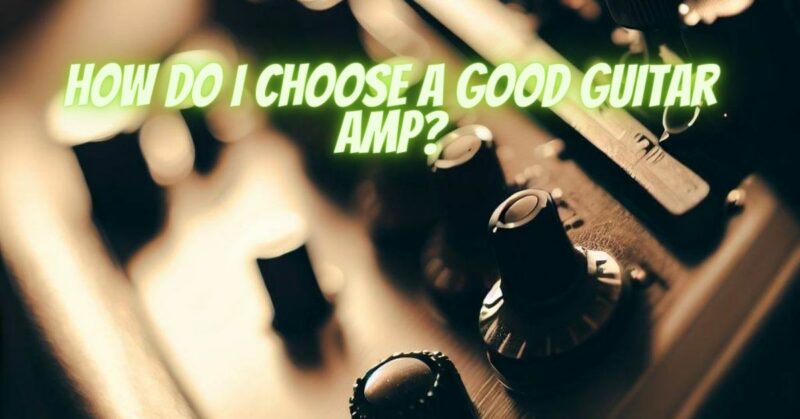Choosing the right guitar amplifier is a critical decision for guitarists, as it significantly impacts the tone, volume, and overall performance. With a vast array of options available, it can be overwhelming to find the perfect amplifier that complements your playing style and musical preferences. In this article, we will explore the key factors to consider when selecting a suitable guitar amplifier to help you make an informed decision.
- Amplifier Type
There are different types of guitar amplifiers, each offering distinct tonal characteristics:
- Tube Amplifiers: Known for their warm, rich, and dynamic sound, tube amplifiers use vacuum tubes in their circuitry. They are favored by many guitarists for their responsiveness and natural overdrive when pushed.
- Solid-State Amplifiers: Solid-state amplifiers use transistors and integrated circuits for their circuitry. They are generally more affordable and lighter than tube amps, providing clean and reliable tones with less maintenance.
- Modeling Amplifiers: Modeling amps digitally emulate the sound of various classic amplifiers and effects. They offer versatility and the ability to switch between different amp models and effects within a single unit.
- Hybrid Amplifiers: Hybrid amps combine tube and solid-state technologies, offering a blend of tube warmth and solid-state reliability.
Select the amplifier type that best suits your preferred tone and playing style.
- Wattage
The wattage of an amplifier determines its volume capabilities. Consider the intended use of the amplifier to determine the appropriate wattage. Lower-wattage amps (1-30 watts) are suitable for home practice, studio recording, and smaller venues, while higher-wattage amps (30+ watts) are better for live performances and larger venues.
- Speaker Size
The size of the amplifier’s speaker(s) influences the overall sound and projection. Smaller speakers (e.g., 8 inches) can provide a focused and punchy tone, ideal for practice and recording. Larger speakers (e.g., 12 inches) offer more full-bodied and powerful sound, suitable for live performances.
- Number of Channels
Amplifiers with multiple channels allow you to switch between different tones and sounds easily. Common configurations include clean and overdrive channels, each with its own set of controls. This versatility allows you to access a broader range of tones without the need for additional pedals or equipment.
- Effects and Features
Some amplifiers come with built-in effects such as reverb, delay, chorus, and more. Additionally, certain models offer innovative features like built-in loopers or direct recording capabilities. Consider whether these built-in effects and features align with your preferences and musical needs.
- Portability
If you plan to move your amplifier frequently or play gigs in different locations, consider the amplifier’s weight and portability. Lighter and more compact amplifiers are easier to transport and set up.
- Budget
Set a budget for your amplifier purchase and explore options within that range. While high-end amplifiers can offer premium features and sound quality, there are also great options available at more affordable price points.
Selecting the right guitar amplifier is a crucial decision that can significantly impact your playing experience. Consider factors such as the amplifier type, wattage, speaker size, number of channels, built-in effects, portability, and your budget. Take the time to try out different models and brands to find the amplifier that complements your playing style, musical preferences, and future performance needs. A well-chosen guitar amplifier will not only enhance your tone but also inspire your creativity and musical expression.


